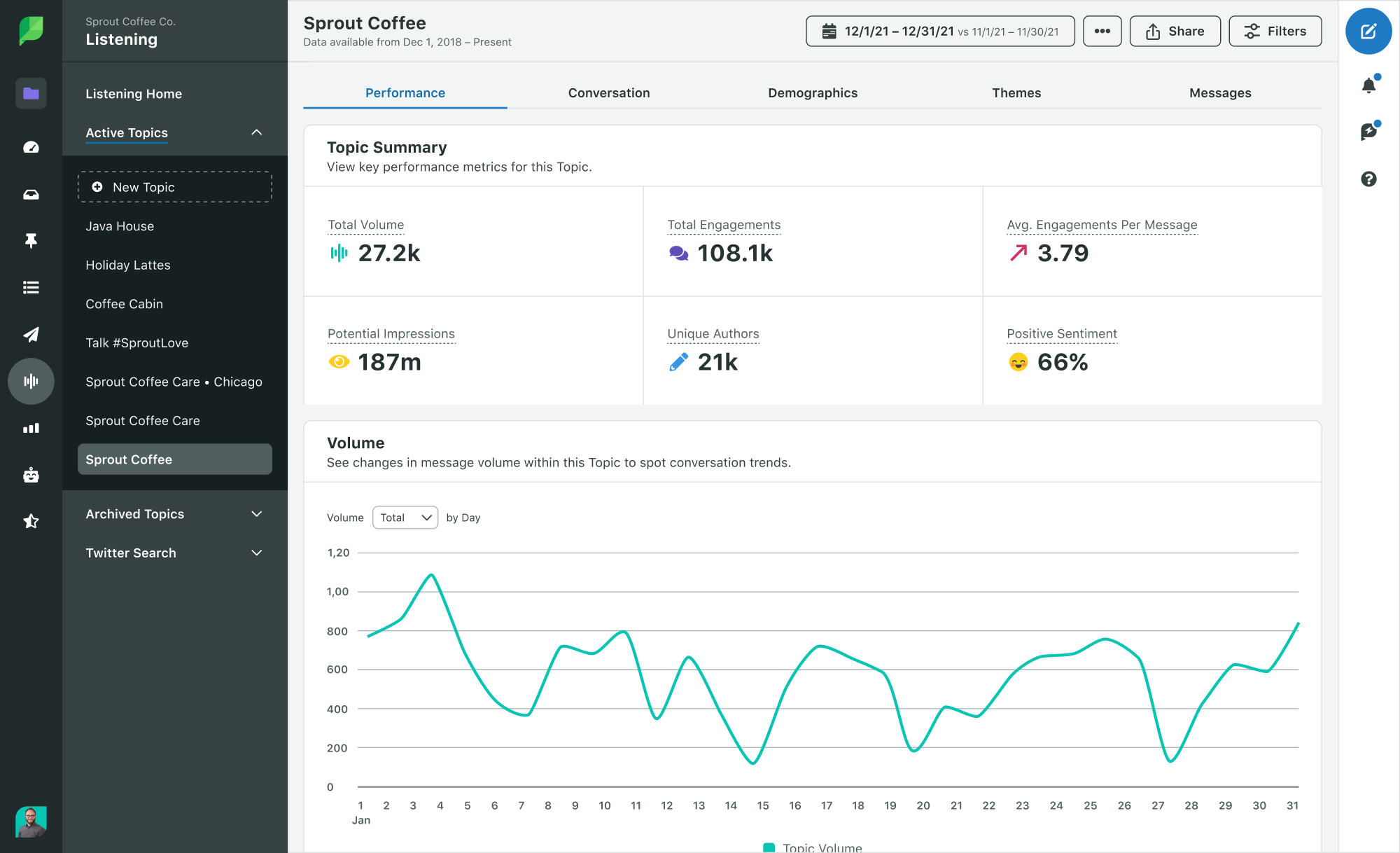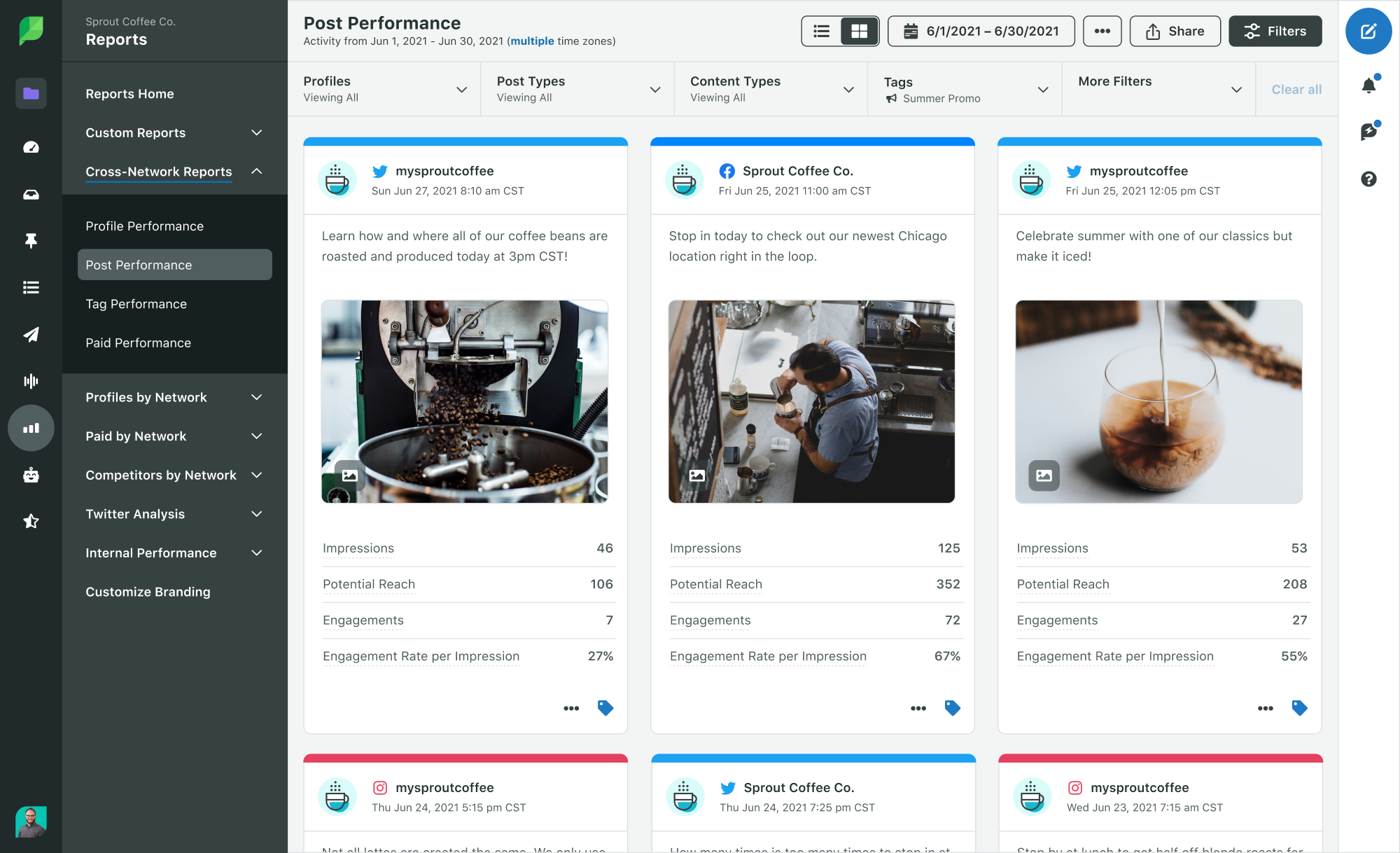Social media target audience: How to find and engage yours
Written by Jacqueline Zote
Published on December 7, 2023
Reading time 7 minutes

Successful social media marketing starts with defining a target audience. Nothing good really comes out of just putting your content out there and hoping for the best. When you have a clear idea of who your audience is, you’ll run more relevant campaigns that resonate.
Here’s a comprehensive guide on what a target audience is, and how to find and reach yours through social media.
What is a target audience?
In simplest terms, a target audience is a group of people that’s most likely to be interested in your product or service. And members of this group usually share common traits. A brand can have several target audiences segmented based on shared characteristics.
Let’s look at a few target audience examples to better understand how it works.
Canva, the design tool, has an audience of designers and design enthusiasts, this audience can be further segmented by how they use the tool.
For example, one of Canva’s target audiences is teachers, who may use the tool to create worksheets, infographics or posters.
Another major target audience group for Canva is social media professionals. This group typically uses the tool to create captivating visuals for their brand’s social media and digital campaigns.
What types of target audiences are there?
There are several types of traits or characteristics that can tie a group of people together. These shared characteristics help you to segment your audience into highly relevant categories.
Demographics
You can group together your audience based on shared characteristics such as marital status and age. These demographic factors may influence people’s needs and pain points. For example, new parents may have different needs from child-free couples when buying or renting a new house.
Location
It’s also common to segment audiences based on where they’re located. This isn’t just limited to a country or a city but may include more specific location factors like neighborhoods and school zones.
Interest
You can segment your audience based on different interests, including activities and hobbies. This helps you deliver meaningful messages that your audience can relate to. For example, you may create separate messaging to resonate with a gamer audience and an audience that enjoys traveling as a hobby.
See how Coldwell Banker speaks to football fans in the following Instagram post. The real estate company makes a comparison between two cities with a caption that would resonate with people who follow football.

Image Source: Instagram
Purchase intent
An intention to buy a specific product is another common way to segment your target audience. Someone looking to buy a car may have different priorities than someone who’s shopping for a laptop. As such, you’ll want to tailor your messaging to better address each of their unique needs and priorities.
Subculture
A subculture is a group of people with a shared experience such as a genre of music or an entertainment fandom. Think Whovians or punk rock fans who may each have different motivations for relating to your brand.
Check out how Dick’s Sporting Goods expertly targets the Taylor Swift fandom in the Instagram post below. The comments section alone gives you an idea of how effective subculture-based targeting is.

Image Source: Instagram
Existing customers
You may even need to create targeted segments of existing customers. For example, you may have a group of inactive customers you want to reengage. At the same time, you may also have a group of long-term and high-paying customers you want to reward.
Why should you define your target audience?
Wondering why you should put so much effort into your target audience definition? Here are some ways you can benefit from marketing to a targeted audience:
- You can spend your advertising budget more effectively.
- You know which social media platforms to focus on.
- You can develop messaging that truly resonates with current and potential customers. This makes it easier to connect with them and earn their loyalty.
Now that you know why you should define your target audience, let’s find out who your target audience is.
Start by taking a closer look at your target audience
To understand your target audience, start by taking a closer look at who’s already following you or buying from you. This will help you identify patterns and trends to segment your existing audience into sub-groups.
Here are a few questions that’ll help you with this step:
1. Who is your current audience?
Monitor who follows you on social media and interacts with your posts. Who likes, shares and comments on your content? Look for common characteristics such as age, location, language and interests.
Then you can use that demographic information to understand the people who make up your existing audience.
2. What kind of information are they looking for and why?
Knowing the kind of information your followers look for and interact with will help you understand your audience. And you’ll identify their needs and how to approach them on social media.
People will have different reasons why they follow brands on social media. And you’ll have to adapt your social media content strategy accordingly.
According to the 2023 Sprout Social Index™, the top reasons consumers follow brands on social are:
- To stay informed about new products or services (68%)
- To have access to exclusive deals or promotions (46%)
- They find the brand’s content enjoyable and entertaining (45%)

3. Where do they go for this information?
Which social media platforms does your target audience frequent the most? The answer to that question will help you know where to focus your marketing efforts.
For instance, launching an X (formally known as Twitter) campaign doesn’t make sense if your target demographic mostly uses Instagram. Understanding what your target audience wants and on which platform will define your content strategy.
4. What are they talking about?
Make use of social listening to analyze social media conversations that your audience is participating in. This step will help you understand their biggest pain points and desires.
What are their likes and dislikes? What challenges do they have and what solutions are they looking for? What are they saying about your brand or products?
Sprout Social makes distilling online conversations easy with its social media listening tool. This tool tracks conversations around your brand and identifies trending topics. These insights then help you discover your target audience’s interests, preferences and pain points.

5. Who do they trust?
Having a good idea of who your audience trusts can inform different aspects of your marketing strategy. For instance, knowing their favorite influencers will help you develop relevant influencer partnerships.
Look into your target demographic’s social habits: Which brands do they engage with? Are there any common influencers they seem to love? What is their go-to content source? Do they read online reviews or ask other consumers for opinions to make their purchase decisions?
These insights can inform how to strengthen your brand reputation and establish trust with them.
How to define a new target audience
When defining a target audience, you need to look into data from multiple sources. This includes buying trends, consumer engagements and social media behavior. Here are four main ways to define your new target audience.
Market research
Start by looking at your current market to identify any gaps that your product can fill. Are there any unmet needs experienced by consumers in the market? What unique value can you present to set yourself apart? This is an important step to identifying the types of people who will find value in your offering.
Industry trends
Similarly, the same market research can reveal trends shaping the industry. Look at changes in regulations and consumer behavior. Then try to analyze how these changes could lead to the rise of new trends influencing your target audience definition.
Social media data
Social media has a wealth of information on consumer behavior and preferences. Look into this data to understand what people are talking about and how they’re engaging with content.
Make use of Sprout’s analytics tools to centralize your social media data collection. This makes it easier to analyze how people are responding to your posts across multiple channels. That way, you can understand content preferences and define your target audience accordingly.

Analytics data
Your website analytics data can also provide you with valuable insights into your visitors. You can define a target audience based on where they’re coming from, which pages they visit and more.
Conduct social media competitor analysis
A social media competitive analysis is a vital step for defining your target audience. Take a closer look at your competitors’ social media strategy and ask the following questions:
- What types of people are your competitors targeting?
- How are they reaching out to their target audience?
- What are they doing right?
- What’s missing from their strategy?
- What key benefits are they emphasizing in their marketing?
- How often are they posting?
- Which content formats seem to work the best for them?
- What tone are they using?
Once you understand your competitors, you’ll be able to identify your key competitive advantages.
For example, Netflix’s original shows give the platform leverage over its competition. To make the most of this unique selling point, the company builds a loyal community around those shows. It targets different fandoms by starting conversations related to their favorite shows such as “The Crown.”

Image Source: X
Define the key benefits of your products or services
With a better understanding of your target audience, you can now explain how your products or services solve their problems. What value does your business offer? Think about how their pain points align with your key benefits. This will help you position your business in a way that resonates with your target audience.
Create content for your social media target audience
Once you have all this insight about your target audience, it’s time to start creating content that resonates with them.
Here are a few best practices to guide you:
- A/B test different content elements, formats and publishing times. Fine-tune your content strategy based on the types of posts your target audience tends to engage with. Monitor what kind of captions they like and which timing works best to engage them.
- Create content for different stages of the marketing funnel. Entertaining content may be great for capturing attention at the awareness stage, for example. But those at the consideration stage are likely to find more value in informative and instructional pieces.
- Be more direct with your audience research. Instead of relying on analytics data alone, get straight to the source and put those insights into context. Conduct polls and ask them questions so you can engage them better. And create customer personas to ensure your content is highly relevant for all members of your target audience.
Ready to connect with your target audience?
Now that you’re armed with the knowledge to identify and engage with your target audience, you can create a strategy to connect with them. To take it one step further, use our free worksheet on how to create authentic connections with your audience.
- Categories
How social media network fragmentation will impact your 2024 strategy
Published on January 29, 2024 Reading time 3 minutes - Categories
How to build a customer-centric B2B social media strategy
Published on January 25, 2024 Reading time 13 minutes - Categories
19 top Hootsuite alternatives for your brand in 2024
Published on December 20, 2023 Reading time 16 minutes


Share